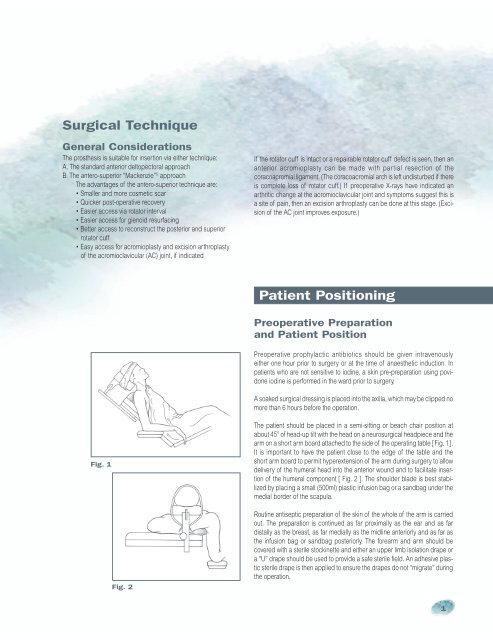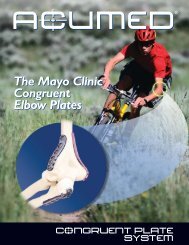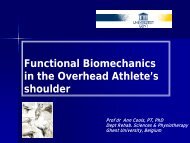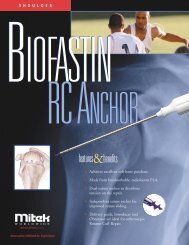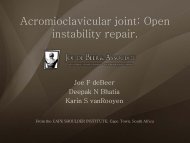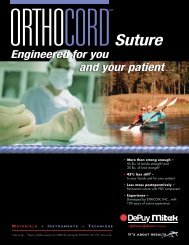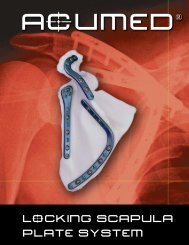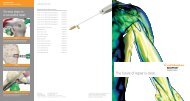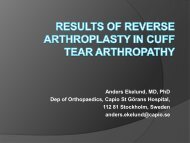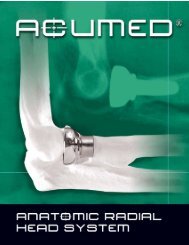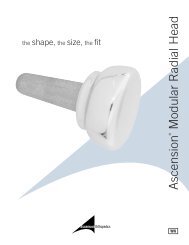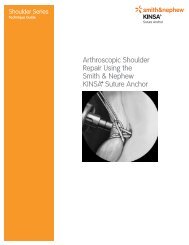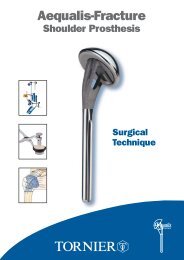Copeland Shoulder, Biomet - ShoulderDoc.co.uk
Copeland Shoulder, Biomet - ShoulderDoc.co.uk
Copeland Shoulder, Biomet - ShoulderDoc.co.uk
- No tags were found...
You also want an ePaper? Increase the reach of your titles
YUMPU automatically turns print PDFs into web optimized ePapers that Google loves.
Surgical TechniqueGeneral ConsiderationsThe prosthesis is suitable for insertion via either technique:A. The standard anterior deltopectoral approachB. The antero-superior “Mackenzie” 5 approachThe advantages of the antero-superior technique are:• Smaller and more <strong>co</strong>smetic scar• Quicker post-operative re<strong>co</strong>very• Easier access via rotator interval• Easier access for glenoid resurfacing• Better access to re<strong>co</strong>nstruct the posterior and superiorrotator cuff•␣ Easy access for acromioplasty and excision arthroplastyof the acromioclavicular (AC) joint, if indicatedIf the rotator cuff is intact or a repairable rotator cuff defect is seen, then ananterior acromioplasty can be made with partial resection of the<strong>co</strong>ra<strong>co</strong>acromial ligament. (The <strong>co</strong>ra<strong>co</strong>acromial arch is left undisturbed if thereis <strong>co</strong>mplete loss of rotator cuff.) If preoperative X-rays have indicated anarthritic change at the acromioclavicular joint and symptoms suggest this isa site of pain, then an excision arthroplasty can be done at this stage. (Excisionof the AC joint improves exposure.)Patient PositioningPreoperative Preparationand Patient PositionPreoperative prophylactic antibiotics should be given intravenouslyeither one hour prior to surgery or at the time of anaesthetic induction. Inpatients who are not sensitive to iodine, a skin pre-preparation using povidoneiodine is performed in the ward prior to surgery.A soaked surgical dressing is placed into the axilla, which may be clipped nomore than 6 hours before the operation.Fig. 1The patient should be placed in a semi-sitting or beach chair position atabout 45° of head-up tilt with the head on a neurosurgical headpiece and thearm on a short arm board attached to the side of the operating table [Fig. 1].It is important to have the patient close to the edge of the table and theshort arm board to permit hyperextension of the arm during surgery to allowdelivery of the humeral head into the anterior wound and to facilitate insertionof the humeral <strong>co</strong>mponent [ Fig. 2 ]. The shoulder blade is best stabilizedby placing a small (500ml) plastic infusion bag or a sandbag under themedial border of the scapula.Fig. 2Routine antiseptic preparation of the skin of the whole of the arm is carriedout. The preparation is <strong>co</strong>ntinued as far proximally as the ear and as fardistally as the breast, as far medially as the midline anteriorly and as far asthe infusion bag or sandbag posteriorly. The forearm and arm should be<strong>co</strong>vered with a sterile stockinette and either an upper limb isolation drape ora “U” drape should be used to provide a safe sterile field. An adhesive plasticsterile drape is then applied to ensure the drapes do not “migrate” duringthe operation.1


